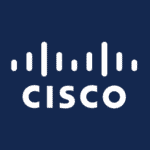Software-defined wide area networks (SD-WANs) increase the connectivity, flexibility, and scale of enterprise networks, removing much of the physical and manual limitations on administrators.
Enterprises must quickly and securely transport data between distributed data centers, offices, and cloud applications. SD-WANs are a software-managed method of efficiently connecting an entire enterprise to the places and data they need to operate.
See below to learn about SD-WAN technology and the top SD-WAN providers in the market:
Best SD-WAN Solutions and Providers
- Features
- Benefits
- Use cases
- Top SD-WAN solutions
- SD-WAN vendor comparison
- What to look for in an SD-WAN solution
SD-WAN features
Software-defined WAN solutions often include the following features:
- Dynamic application traffic adjustment: Software-defined networks provide methods for application traffic to be transferred to another network link if the path they’re initially traveling has technical difficulties. Application performance is less likely to be negatively affected when the software can dynamically shift packets to a working section of the network.
- Built-in security tools: Most SD-WAN vendors provide a few security features, such as antivirus software or access control; some enterprise cybersecurity providers also have SD-WAN or integrated secure access service edge (SASE) solutions with additional security features.
- Analytics: The ability to visualize data from all regions of the network, including edge offices, in one platform centralizes enterprise traffic analysis. Some vendors also offer more advanced analytics for network data, like threat intelligence-specific features.
- Integration with public cloud providers: For enterprises, connecting cloud storage and workloads to their corporate software-defined network improves flexibility and the ease of moving application data across the network.
Also read: Why the Time is Now for Next-Generation SD-WAN
SD-WAN benefits
SD-WAN benefits for enterprises include:
- Improved connectivity for remote workforces: Enterprises that have national or international offices and data centers or colocation centers can link all their locations together with a software-defined WAN, able to communicate between all branches.
- Ability to use multiple network protocols: SD-WANs allow enterprises to use legacy network technologies, like MPLS, alongside broadband and Ethernet. Some SD-WANs also include 4G, LTE, or 5G network connectivity for mobile device networking.
- Increased network security: Tools such as firewalls, microsegmentation, and network access controls, which are included in some SD-WANs, tighten enterprise network security, decreasing the chances of a breach.
- Decreased time requirements for administrators: Because the network is software-defined, admins can more easily set policies, rather than having to go to each branch or data center and manually configure a networking appliance.
Also read: SD-WAN Deployment Pitfalls: How to Avoid 5 Common Challenges
SD-WAN use cases
“We have roughly 160 sites worldwide consisting of manufacturing plants, warehouses, and office space. We ran proof-of-concept trials with several SD-WAN vendors, and Prisma proved the best fit for our network. The analytics alone are very impressive, but combine that with ease of migration, scalability, and improved MTR and this became an easy decision. The sales and technical support along the way has been exceptional.” -network services employee, review of Prisma SD-WAN at Gartner Peer Insights
“Implementation was fantastic and the CATO solution did everything as advertised. We eliminated edge routers as well as on prem NG firewalls, web content filtering and VPN hardware. This allowed us to finally move away from backhauling Internet traffic, decentralize connectivity while still maintaining a single pane of glass to all network traffic, edge security, antivirus\malware, web filtering and VPN. Our 27 location network is nearly bullet proof now. CATO enabled us to quickly transition to remote work and also bring a new location online in Mexico during the COVID crisis.” -IT director, review of Cato SASE Cloud at Gartner Peer Insights
“Overall, it has been a huge success migrating from a legacy traditional network to SDWAN. After the initial design and architecture was ironed out, adding additional sites has been very quick and painless. Dynamic failover to cellular backup is a true gamechanger… DMPO feature works well in mitigating latency/packet loss on WAN circuits.” -senior principal network architect, review of VMware SD-WAN at Gartner Peer Insights
Top SD-WAN solutions
Palo Alto Prisma SASE SD-WAN
Palo Alto Prisma SASE SD-WAN is a secure access service edge and SD-WAN solution that includes cybersecurity and cloud-based third-party deployment. Formerly CloudGenix SD-WAN, the networking provider merged with Palo Alto in 2020. Palo Alto is recognized as a leader in the 2021 Gartner “Magic Quadrant” for WAN edge infrastructure for Prisma SD-WAN.
Users can view a world map that shows branch offices where SD-WAN appliances are
Prisma SD-WAN integrates with several other complementary Prisma brand solutions, such as Palo Alto Prisma Access, the provider’s network access and security platform. By using the software together, businesses receive zero-trust network access (ZTNA) capabilities and a cloud access security broker (CASB) as well. Prisma Autonomous Digital Experience Management (ADEM) allows enterprises to view traffic analytics for endpoint and IoT devices on the network as well as see the full SASE path that network users take. Prisma CloudBlades is a platform that provides APIs to connect the SD-WAN to approved third-party applications. These applications include public cloud storage solutions and enterprise communication software.
Key differentiators
- AIOps features for network analytics, including analyzing virtual private networks (VPNs) and sites
- CloudBlades, a cloud-based third-party integration platform
- Prisma SD-WAN Clarity, a tool that provides health and performance data on WAN technology
- Integrated 5G networking, delivered through the ION 1200 appliance
Also read: Top Cybersecurity Solutions
Cato SASE Cloud
Cato SASE Cloud encompasses both SD-WAN and network security. Its global backbone, composed of points of presence, monitors all network providers to determine the optimal route for each data packet. Cato’s self-service management application is an interface for the entire SASE Cloud, allowing customers to configure their own network.
Cato has a security-as-a-service stack, native to the SASE Cloud. Its security offerings
Cato also provides zero-trust network access (ZTNA) for both cloud and on-premises applications. Businesses can enable multi-factor authentication for PoP connections through Cato browser access.
Key differentiators
- Cloud application acceleration — routing cloud app traffic based on bandwidth needs
- Integration with public cloud providers, including Google Cloud and Microsoft Azure, that does not require paying for a cloud server instance
- Zero-trust network access for cloud and on-premises apps
- Native security-as-a-service stack
Aryaka SD-WAN
Aryaka’s managed SD-WAN services extend to over 40 PoPs and six continents. Its network is known as FlexCore, the fabric that joins multiple enterprise applications, public cloud storage providers, data centers, and branch offices. Aryaka offers five nines of availability and supports public cloud providers, like Alibaba and Oracle, and enterprise software, like Salesforce and SAP.
Aryaka customers have the option to connect with existing multi-protocol label switching
SmartInsights, Aryaka’s advanced analytics platform, allows customers to monitor traffic insights and configure SSL certificates. Multicloud direct links plug public cloud and SaaS providers into the Aryaka network.
Multiple customers positively review Aryaka’s support team. Aryaka provides a point-of-contact representative to each enterprise customer, who they can directly contact when in need of support.
Key differentiators
- Support for more cloud providers than the big three
- Advanced analytics through SmartInsights
- MPLS migration and integration into Aryaka network
- An assigned Aryaka point of contact for support
Also read: Top Cloud Providers & Companies
Fortinet SD-WAN
Network security provider Fortinet’s SD-WAN solution offers multiple security features, including SSL and TLS inspection and web filtering. Fortinet is a leader in the 2021 Gartner “Magic Quadrant” for WAN edge infrastructure.
Branch offices receive network access control features as well as LTE, 4G, and 5G
Another feature of Fortinet’s SD-WAN solution is Fortinet Security Rating Service, which lists industry best practices for standards, such as PCI DSS, and allows organizations to track their progress with NIST security recommendations.
Key differentiators
- Automatic fail over
- Intrusion prevention, sandboxing, and VPN tunnels for added security
- 4G, LTE, and 5G connectivity
- First-packet application traffic identification
VMware SD-WAN
Formerly Velocloud, until the networking provider was acquired by VMware in 2017, VMware’s SD-WAN belongs to the virtualization company’s SASE platform. VMware’s SD-WAN has three modules: Orchestrator, Edge, and Gateways. The Orchestrator module is the SD-WAN management platform. The Edge module includes branch deployments, virtual deployments, or public cloud. Gateways is for PoPs near applications in SaaS, IaaS, or data center environments; they can be hosted in the cloud or on-premises.

A key function of VMware’s SD-WAN is dynamic multipath optimization: it includes features like real-time monitoring, link remediation, and packet steering. Network admins can also set policies for prioritizing critical applications.
VMware is as a leader in the 2021 Gartner “Magic Quadrant” for WAN edge infrastructure.
Key differentiators
- Dynamic multipath optimization with link remediation and packet steering
- High availability configurations for the edge
- Support for 4G, LTE, and 5G protocols
- Support for multiple cloud web security tools, including Check Point, Palo Alto Networks, and Menlo Security
Cisco SD-WAN
The networking giant Cisco offers five deployment platform choices to customers, including wireless WAN, cloud, and Cisco security, as well as SD-WAN functions through its Meraki solution.
Users receive multicloud access through Cloud OnRamp, which connects physical locations
Cisco SD-WAN’s integration with ThousandEyes, a network performance monitoring tool, improves visibility for applications within an enterprise’s infrastructure; users receive alerts about anomalies and can view current network conditions.
Other features of Cisco’s SD-WAN include integrated 4G LTE, support for multicast routing protocols, and application-based routing. Users can also implement security policies for direct internet access (DIA) at remote sites.
Key differentiators
- Integration with ThousandEyes for enhanced network performance visibility
- Direct internet access for edge deployments
- Cloud OnRamp, a cloud networking platform
- Support for multicast routing protocols
SD-WAN vendor comparison
| SASE option from vendor | Zero trust network access (ZTNA) | Cellular network support | Analytics | |
| Palo Alto Prisma | ✅ | ✅ | ✅ | ✅ |
| Cato | ✅ | ✅ | ✅ | ✅ |
| Aryaka | ✅ | X | ✅ | ✅ |
| Fortinet | ✅ | ✅ | ✅ | ✅ |
| VMware | ✅ | ✅ | ✅ | ✅ |
| Cisco | ✅ | X | ✅ | ✅ |
What to look for in an SD-WAN solution
To choose an SD-WAN solution, consider the following questions:
- Do you need heavy security features in your solution? Examples of businesses that might want stronger security tools built into their SD-WAN include medical and financial services companies.
- How many protocols does the SD-WAN support? If your business is still planning to use legacy technology, you’ll need an SD-WAN solution that supports those older protocols, like MPLS.
- Does the SD-WAN solution offer 4G, LTE, or 5G connectivity? If your enterprise has a heavily mobile workforce, speak with the SD-WAN provider to determine which cellular technology they support.
- Does your business need advanced analytics? Larger enterprises may want an SD-WAN solution with heavy data analytics features.
Also read: Top Networking Certifications



